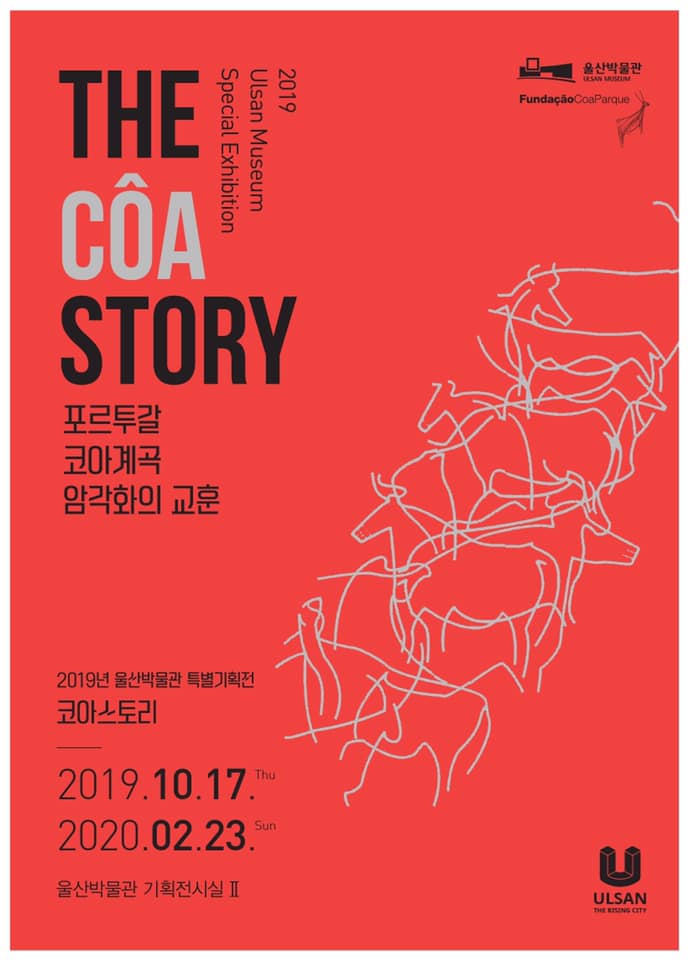The connection between the Côa Valley Rock Art and the Bangudae Petroglyphs (South Korea) has been developing since 2015, as a result of the great interest in this Asian country in the so-called Côa affair. This interest is based on the fact that Bangudae rock art site, the most important on the Korean Peninsula, is periodically submerged by the waters of a dam built before the engraving motifs were discovered. Apart from the seasonal rise of this reservoir causing serious conservation problems for rock art, such submersion does not allow, as the integrity of the site is at stake, to include the Bangudae in the UNESCO World Heritage List, as South Korean authorities wish.
Thus, seeking inspiration in the case of Côa, in which the construction of a large dam was interrupted to preserve the rock art discovered there, culminating in 1998, with the classification of Côa Art as a UNESCO World Heritage Site, the Ulsan Museum, in partnership with the Côa Museum, presents in 2019 the special exhibition “The Côa Story, leading to the Bangudae”.
Koreans express the greatest interest and appreciation for the so-called “Côa miracle” that allowed the safeguarding of prehistoric art. The South Korean city of Ulsan, with a population of 1.2 million, is the country’s largest industrial center, home to a major hub for car and shipbuilding, as well as one of the world’s largest refineries. Water in Ulsan is a precious resource for human consumption, but also indispensable for this industrial activity. Despite the technical complexity and associated costs, an agreement was announced on this occasion between the central government and the local authorities of Ulsan that will allow the phased lowering of the reservoir level to a quota that will permanently put the engraved Bangudae panel out of reach from the water, creating thus optimal conditions for their conservation and preparation of a World Heritage dossier. For South Korean officials, there is no doubt that the “Côa Case” was determinant for this historic decision.


